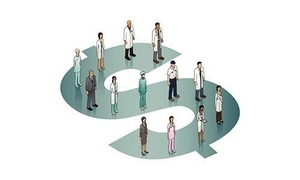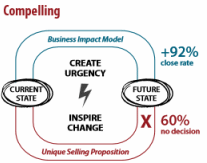July, 2014
- IDN update – many are becoming insurance providers as well as care
The need to form ACOs and cut costs has also resulted in IDNs wanting to provide more than healthcare - they want to be the insurer as well. What does it mean when one organization controls both the insurance side and the delivery side of the business?
- HSCA publishes its 2014 GPO study: GPO’s alive, doing well, and driving the supply chain with over $864 Billion in savings
- Fuji gets FDA clearance – enters the Full Field Digital Mammography business in the US
- CMS claw-backs threaten to bankrupt hospitals
"Essentially it wipes out any profit we would have next year, so that's kind of why we're struggling with it," said Jackson Health System chief financial officer Mark Knight, noting the state's largest public hospital had operated in the red for years before turning things around. Jackson stands to lose $47 million in Medicaid funding with this one issue. Tampa General would be out $13.3 million.
- Diagnostic Imaging escapes the knife – CMS slashes at reimbursment for Radiology Oncology instead
- Seismic shock to big healthcare IT PACS RIS – Siemens out?
- What the gospel of innovation gets wrong
Jill Lepore of the New Yorker roundly critizes the idea of Disruptive Innovation decribed in "The Innovator's Dilema" by Clayton M. Christensen and applied to Healthcare by Kenneth Kaufman. If Healthcare must reinvent itself the worst model to use would be that of Disruptive Innovation, at least according to Ms. Lepore. Regardless of how change happens, those of us in the Medical business must adapt, otherwise we'll be the Blockbuster to Netflix or as Borders was to Amazon.
- 2014 The 50 Top-Grossing For-Profit Hospitals
University of California San Francisco Medical Center at Parnassus[1] — $7.67 billion
University of California Davis Medical Center (Sacramento) —$6.36 billion
University of Michigan Hospitals and Health Centers (Ann Arbor) — $5.32 billion
Ohio State University Wexner Medical Center (Columbus)[2] — $5.22 billion
The University of Texas M.D. Anderson Cancer Center — $5.19 billion
UAB Hospital (Birmingham, Ala.) — $4.6 billion
Carolinas Medical Center (Charlotte, N.C.)[3] — $4.25 billion
Parkland Hospital (Dallas) — $4.12 billion
Jackson Memorial Hospital (Miami)[4] — $4.02 billion
The University of Kansas Hospital (Kansas City) — $3.96 billion
Plus 40 more
- IT buying differnces between For-Profit and other kinds of hospitals – where you should be selling IT (or not)
For-Profit hospitals have dramatically shifted their buying from multiple IT solution purchases to single purchases. Government and Not-For-Profit hospitals continue to have multiple IT initiatives and purchases in the same year. This has important sales implications: don't try to sell into For-Profit facilities if they are already implementing a new IT solution - get on their next buy radar. The Dorenfest Institute for Health Information and Healthcare Information and Management Systems Society (HIMSS) have extensively analyzed the Healthcare IT space.
- 2014 – Where are IT Dollars going to be spent? Hint PACS and RIS only get 29% of the money
- Hologic to Release Third Quarter Fiscal 2014 Operating Results on Wednesday, July 30, 2014
- HSCA Report Summary: Group Purchasing Organizations Generate Up to $55 Billion in Annual Cost Savings
"The Healthcare Supply Chain Association (HSCA) today announced a new economic analysis on the value of group purchasing organizations (GPOs) to the U.S. healthcare system which found that GPOs generate up to $55 billion in annual savings for hospitals, Medicare and Medicaid, and taxpayers. The report specifically found that, from 2013 to 2022, GPOs are expected to generate savings of up to $864 billion for the entire U.S. health system, $229 billion in Medicare savings, and $169 billion in Medicaid savings. Healthcare economists Dobson DaVanzo & Associates used updated National Health Expenditure (NHE) data published by the U.S. Centers for Medicare and Medicaid Services (CMS) to complete the empirical analysis"
- Not so fast Google says, regulation so bad that Entrepreneurs won’t be innovating Healthcare
"Generally, health is just so heavily regulated. It's just a painful business to be in. It's just not necessarily how I want to spend my time. Even though we do have some health projects, and we'll be doing that to a certain extent. But I think the regulatory burden in the U.S. is so high that think it would dissuade a lot of entrepreneurs."
- AnMed Health Installs 15 Carestream DRX Imaging Systems over Five Years
AnMed Health System (Anderson, S.C.) has retrofitted nine X-ray rooms and three mobile imaging systems with DRX detectors and installed two CARESTREAM DRX-Revolution Mobile X-Ray Systems and a dual-detector CARESTREAM DRX-Evolution DR room.
- Toshiba releases new Interventional Cardiac Imaging solution
- 14 of the Fortune 500 are going to compete directly for Healthcare dollars – against you
- Who is Healthcare’s Jeff Bezos and why should it matter?
- Cheyenne Regional Medical Center Will Cut $17M in 2 Years
- Clinical decision-support (CDS) software becomes mandatory before ordering Imaging Studies
Starting January 1, 2017, physicians ordering advanced diagnostic imaging exams (CT, MRI, nuclear medicine and PET) must consult government- approved, evidence-based appropriate-use criteria, namely through a CDS system
- The Risks of Hospital Mergers…
Hospital mergers drive up costs because they control pricing and reduce competition. Massachusetts General Hospital and Brigham and Women’s Hospital merged into a single system known as Partners Healthcare, something the State now regrets.
- The shift from Fee-For-Service to Population Health increases pace
Blue Cross and Blue Shield now spending 1 out of every 5 medical claim dollars incentivizing better health outcomes rather than rewarding providers for volume.
- American Family Care, one of the largest Urgent Care providers joins forces with Baptist Hospital
- Is Google going to be the largest competitor to Medical Device Manufactures?
Medronic thinks so
- Sales Trigger Events: 9 Recent Hospital Transactions and Partnerships
- Premier more than a GPO – they are driving and funding innovation
$40 Billion Hospital Supplier Links Health Innovators With Clinicians. Forbes has a good article on how Premier and other deep pocked corporations are funding medical device manufactures and clinicians. "Innovation Celebration is hosted annually by Premier Inc., an alliance of about 3,000 U.S. hospitals and 110,000 other health services providers. As one of the nation’s largest purchasing alliances with more than $40 billion in annual hospital supply purchases flowing through the company, Premier has a unique perspective on what care providers need to better care for patients."
- U.S. Orthopedic Trauma Device Market To Exceed $8 Billion By 2020
- Million dollar messaging – the key to having sales conversations and business development
1. Your buyers are saying one thing and doing another
2. There is a big difference between problem finding vs. problem solving
3. Facts alone don't create insight, nor appeal to the customer
4. Salespeople must practice in order to deliver messaging well
5. Timing, appropriateness, and delivery make or break communication
6. Goal is conversations - SALES - not Best Friends Forever BFF
7. Discounting is a marketing/sales problem
8. Give aways lose sales
- HIMSS 2013 Annual Report of the U.S. Hospital IT Market – including modality penetration
If you sell in the IT space or Diagnostic Imaging Equipment this report will tell you what is being purchased, trends, and what level of penetration has occurred. For example, over 98% of academic centers have already purchased CR and DR. They are not your low hanging fruit. To find out what is read this very detailed HIMSS report.
- Compete against Cerner? Here are 10 things to know.
- …Meanwhile, despite the risks, consolidation could be next for academic medical centers
Now academic medical centers are merging with for-profit systems. The University of Arizona Health Network in Tucson agreed to sell its operations to Banner Health. Banner will spend at least $500 million on UAHN capital projects over the next five years, create a $300 million endowment for clinical research and pay off UAHN's long-term debt of $146 million. Banner is the seventh-largest secular, not-for-profit system in the country.




